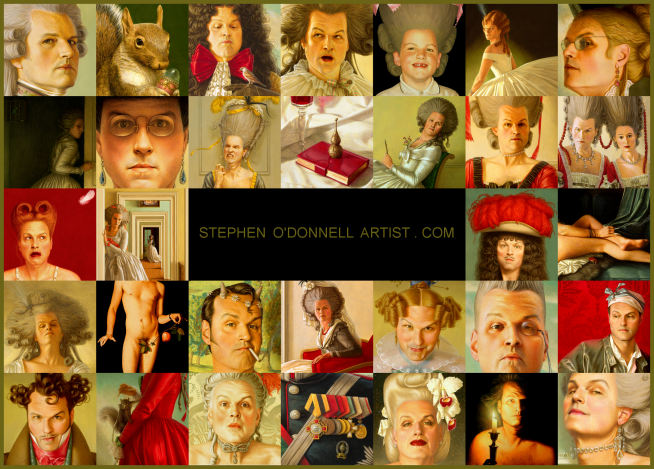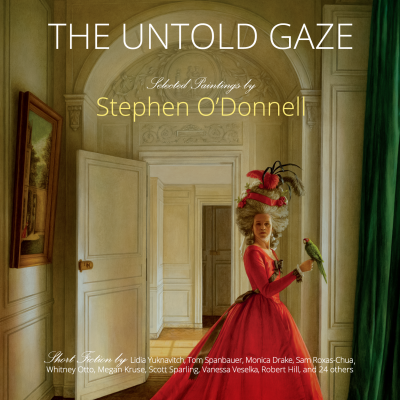Last night Gigi and I attended a performance of Eugene O'Neill's "Long Day's Journey Into Night". Pulitzer Prize-winning, considered by most to be one of the greatest American plays of the twentieth century; many would say
the greatest. Never afraid to think - and speak - for myself, to form opinions that run recklessly counter to the consensus opinion, I would strongly disagree. I don't really think this is a great play; I don't really think it's even terribly good.
I know that's fairly blasphemous to say but
chacun à son goût, dammit! If you enjoy this sort of thing, then by all means go. We all have things that we enjoy greatly, and need make little effort to try and sync them up with those of others. But I certainly did not "enjoy greatly" Mr. O'Neill's celebrated play; honestly, I left the theatre feeling
battered. And pointlessly so. I am quite willing to be tortured artistically if I get something out of it. An insight, some mesmeric image, a subtle wisdom. G and I talked for hours after getting home about what we were willing to
endure for the sake of art. A lot, actually. And we're both very willing to accept a work in its own context, taking into account the world it was
born into, and how the world has changed since then. And we're also always very careful to monitor our own limitations, what our expectations are, having been born into the world
we know. And we're not afraid of "dark", either; G's favorite play is "Streetcar", for crissakes. So we'll always try and give a play a break. But, comparing this with a lot of the other great theatre we've seen, and with the writing of the playwrights we admire, we both felt this was rather awful.
Bloated and self indulgent. G liked a lot of the language, but there was no discernible structure; if I were to wax metaphorical, I'd say it was like taking all the materials for a building and dumping them into a heap at the construction site. You can't live there! It went on and on, repetitive in the extreme. I can see no reason for it to be as long as it was. I understand that, in a striving for naturalness, O'Neill has the characters repeat the same concerns and stories over and over again, because that's what people really do. But this is theatre, not real life. There is a job to do, in a (hopefully) fairly limited space of time. As I've said before, I believe art is always about some sort of communication. If, in the service of naturalism, the play runs on for an inordinate length of time, structureless, with the characters repeating the same not-very-interesting business in not-terribly-interesting language and, at the end, the audience really doesn't know anything more about these people than the clichés presented as their motivation, what have you got? What can you feel for these people besides some vague pity? What is the point? Andrew Upton, the director of this production, says, "Even though by the end of the play nothing has been resolved and their lives are difficult, there is real wisdom in it. There is humor and wisdom that leavens the darkness." I agree entirely - except that I find no wisdom here. Only "recording", no understanding or insight. And what humor might be written into the play, is flooded out by the physical and emotional discomfort the audience is forced to endure. There is, sadly, no useful/usable leavening.
I believe I'm fairly able to keep my opinion of the play and the performance separate, but the current production can't have helped the situation much. This was a co-production of the celebrated Sydney Theatre Company and Portland's own Artists Repertory Theatre. Being performed in both cities, this is a pretty high-profile endeavor, not the least part being that James Tyrone is played by William Hurt. So one would expect to find something that felt better worked-out, more polished. It doesn't seem
casual as a "choice", it just seems half-baked. Visually, it manages to be both confounding and boring. The strangely flashy set, extremely pared down, all "Expressionistic" angles, seems meant for some other play. It doesn't relate to or service this one at all. And the costumes are as misunderstood and incomplete as what one might expect from a high school production - and they only had five actors to dress! The lighting was flat and used to no real effect. I will say that the final tableau was beautifully posed and lit. And all the more striking as, in comparison with the rest of the production, it seemed
thoughtful.
Though I think some of the casting choices were not entirely wise, all five of the actors did admirable work. But none of them were in the same play; there was a jarring disunity of acting styles. And both Hurt and Luke Mullins, who played Edmund, were very frequently unintelligible. I have excellent hearing, but their diction (and, often, projection) was so poor that much of the text was lost. I thought both of them gave rich, interior performances, but if you can't understand what the actor is saying...? By contrast, local Todd Van Voris, as James Jr., and Emily Russell, as Cathleen, might have been playing in Vaudeville. Gesturing and mugging, you could "read" them out in the lobby. But, by God, you knew what they were saying. Robyn Nevin as Mary Tyrone gave probably the most subtle and comprehensible performance. And the most theatrically balanced; nuanced but still audible.
So why didn't the very lauded director pull this together better? Why couldn't he guide his very capable actors into a unified whole? It's fairly shocking, such negligence. And, whether I liked being subjected to this particular play or not, I feel bad for the actors. This is a long, strenuous,
naked play; no actor would approach this lightly or without the utmost commitment. It takes great courage and trust to sign on for something this "big". I feel Upton let them down.
Which leads me back to Hurt, the "star-power" of the production. Obviously, a fine, respected actor. Awards, money in the bank, etc. And also obviously, not one who seems particularly interested in the "star" business; an actor, he wants to act. He wants to work. And I think he gave a very interesting performance last night. I don't think he was exactly right for the part, but he gave such an intelligent,
particular interpretation. The odd way he made long, quick rolling passages, all his words run together, was fascinating. He's a very specifically interior actor. And in perhaps all of his roles you feel that coiled energy and intelligence. I can't think what occurred in rehearsal but, if his director had helped him, technically, to better get that interiority
out to the audience - and made sure of a fully-functioning diction - I feel his might have been a
great performance.





























